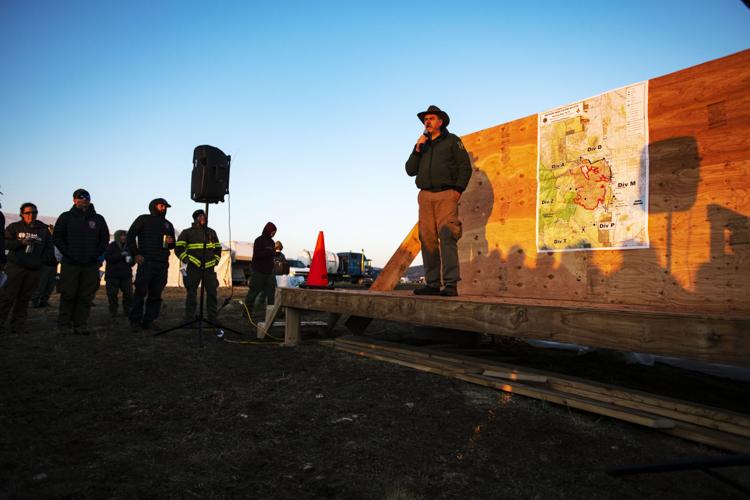
I thought Liz Forster (currently a law student at University of Montana) wrote a great story interviewing folks on a Type I Team in Colorado in 2018 about what they do and why they do it.
When the call came June 30 to take command of the Weston Pass and High Chateau fires, the team had two hours to mobilize. Team members came from as far as New York and Florida. Many local resources already were deployed to other fires burning in Colorado and throughout the West.
From July 1 through July 14, Cheney and co-chief Steve Petersburg’s days started about 5 a.m. and revolved around a hefty Incident Action Plan — “The Bible,” as team spokesman Bob Summerfield calls it.
The document begins broadly, with the incident objectives and staff roster. From there, Cheney and Petersburg tap into the Geographic Information System specialist, fire behavior analyst, meteorologist, air resource adviser and others in the Planning Section who build the bird’s-eye view of the fire.
The Operation Section then outlines tactics: where crews need to dig lines, what communities need structure protection, where fire retardant and water need to be dropped, what safety precautions should be taken.
“We convey the leader’s intent to the people on the ground, then act as a voice for those out in the field,” said Ken Gregor of Planning Operations.
Package in the Logistics Section — facilities, food, ground support, supplies — and Finance, and the document usually tops 30 pages.
With Deputy Incident Commander Dan Dallas’ signature at the bottom, the document is ready to print and distribute. On average, the section makes 250 to 300 copies of a 35-page document. During the height of the 416 fire north of Durango, which the Rocky Mountain team also led, the action plan was pushing 50 pages and more than 500 copies.
“We have to have it, even if people are up until 2 a.m. making copies,” Cheney said. “It’s like in the military — if you have a platoon out there that doesn’t know what they’re doing at the start of each day, they’re a wasted resource.”
…
Many on the team started as wildland firefighters, digging line, sawing down hazardous trees and suppressing the fire in the field.
The past experience provides them with an intimate understanding of the experience in the heat of the flames, and many jump at the chance to get out of the office and onto the fire perimeter.
What doesn’t change from the office to the field is the sense of cohesion, that multitude of cogs turning in this complex operation.
“When I worked on the line, the guy or gal behind you is essential to your well-being and existence,” said Dallas, the deputy incident commander. “That basic human relationship is no less important as you go from the end of the shovel up to the incident commander position.”
For many, that means delaying retirement and flipping the switch to fire. For Cheney and about half of the command team, it means temporarily handing off the responsibilities of their full-time jobs elsewhere in exchange for 14-plus-hour workdays at a fire.
“It’s a lot to manage, but I keep coming back because of the excitement of it, the change of pace,” Cheney said. “I get out from behind my desk, come out here and do something meaningful on the ground.”
Extra income is a factor. But across the board, the command staff gets hooked simply on working with each other.
“If I couldn’t be with my natural family, this is the family I’d choose to be with,” Petersburg said.
Dallas struggled to articulate the bond he feels with those he leads. Instead, he referenced the signed football made of plastic wrap given to him by a camp crew on the 416 fire and a 3-by-3-foot box of cards sent to him by colleagues across the country when he had two craniotomies in 2015.
Dallas said, “I can try to package together neatly why I do this, but there’s just something different about this world.”